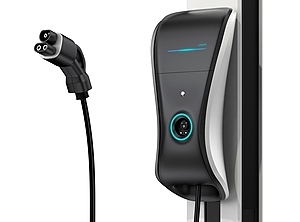ASAHI KASEI
Halogen-, red phosphorous-free PA 6.6 said to offer superior surface quality and laser printability
 The materials are part of the company’s polyamide line (Photo: Asahi Kasei) |
Japanese chemicals and high-performance plastics group Asahi Kasei (Tokyo; www.asahi-kasei.co.jp) has added a halogen- and red-phosphorous-free semi-aromatic PA 6.6 material for electrical appliances and systems to its “Leona” polyamide portfolio. The material is said to be suited for applications in environments where the use of standard flame-retardant PA 6.6 can become an issue.
Available to the European market, the new Leona “SN” PA grades are said to feature superior surface quality and laser printability. The surface quality is achieved without additional treatment or coating, even with glass-fibre content up to 50%, the company said. The excellent laser printability delivers a clearer surface marking than general materials with red phosphorus in high-speed machining of 1000 mm/sec., the supplier noted, which contributes to an increased production speed.
The products are said to maintain a high level of tensile strength and flexural modulus also after moisture absorption, while a comparable halogen-free PA 6.6 material showed a significant decline in properties. The materials are certified with the V-O retardancy at wall thicknesses of 0.75 mm according to the UL standard.
Available to the European market, the new Leona “SN” PA grades are said to feature superior surface quality and laser printability. The surface quality is achieved without additional treatment or coating, even with glass-fibre content up to 50%, the company said. The excellent laser printability delivers a clearer surface marking than general materials with red phosphorus in high-speed machining of 1000 mm/sec., the supplier noted, which contributes to an increased production speed.
The products are said to maintain a high level of tensile strength and flexural modulus also after moisture absorption, while a comparable halogen-free PA 6.6 material showed a significant decline in properties. The materials are certified with the V-O retardancy at wall thicknesses of 0.75 mm according to the UL standard.
29.10.2021 Plasteurope.com [248872-0]
Published on 29.10.2021
